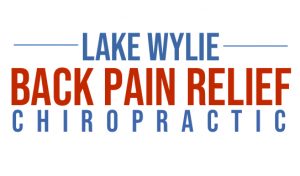Chiropractors are not just interested in getting rid of pain; more importantly, they are interested in preventing future episodes. This model has long been “a standard” in chiropractic and continues to be so today. Why is this so important?
Approximately 91% of older adults have at least one chronic condition, and 73% have at least two. Chronic conditions such as diabetes, high blood pressure, arthritis, and lung disease seriously compromise quality of life and can interfere with the person’s independence. These conditions place a very heavy economic burden on older adults due, in part, to the long-term illness, decreased quality of life, and the significantly increased healthcare costs. In 2011, this cost totaled nearly $3 TRILLION in the United States alone!
The “good news” about all this is that much of illness, disability, and death associated with Chronic Disease is avoidable by utilizing known prevention programs. In 2003, the Administration on Aging (AoA) began its “Evidence-Based Prevention Programs” with the goal to increase access to interventions that have been proven to be effective in reducing the risk of disease, disability, and injury. In collaboration with various scientific agencies within the Department of Health and Human Services, the AoA’s goal has been to put these proven interventions into practice in community settings. For more information regarding chronic disease go to http://www.ncoa.org/improve-health/center-for-healthy-aging/chronic-disease/.
Another important program addresses Fall Prevention, as one in three adults over 65 years of age experience at least one fall, with that number increasing to one in two by age 80. Injuries from falls can be serious enough to result in hospitalization, significant declines in mobility, loss of independence, and even premature death. A national effort entitled, the “Falls Free Initiative” is a program led by the National Council on Aging (NCOA) and addresses this problem through numerous resources to reduce falls among the elderly (http://www.ncoa.org/improve-health/center-for-healthy-aging/falls-prevention/).
Another program offered targets Physical Activity. They report less than 33% of Americans aged 65+ meet the Centers for Disease Control and Prevention’s 2008 Physical Activities Guidelines for Americans which recommends two types of physical activities each week to improve health: aerobic and muscle-strengthening. Recommendations include at least 30 minutes/5 days a week of moderate physical activity and muscle strengthening activities two or more days a week working all major muscle groups.
Behavioral Health is another much needed program available through the Center for Healthy Aging (http://www.ncoa.org/improve-health/center-for-healthy-aging/behavioral-health/). Approximately 20% of adults age 55+ experience, “…specific mental and cognitive disorders” which are NOT part of the normal aging process. Disabilities associated with mental disorders are a major public concern, and here too, there are a number of effective interventions available to treat mental disorders.
In an article entitled, “Prevention and Health Promotion by Chiropractors,” by Gary Globe, MBA, DC, PhD, the author states, “…chiropractors seek to bring a holistic worldview to the doctor-patient encounter, seeking not only to relieve pain and restore neuromusculoskeletal function but also to support the inherent self-healing and self-regulating powers of the body.” He reports that a unique part of chiropractic is the patient encouragement to take an active role in restoring and maintaining health, largely through doctor-guided self-care utilizing exercise and nutrition.

